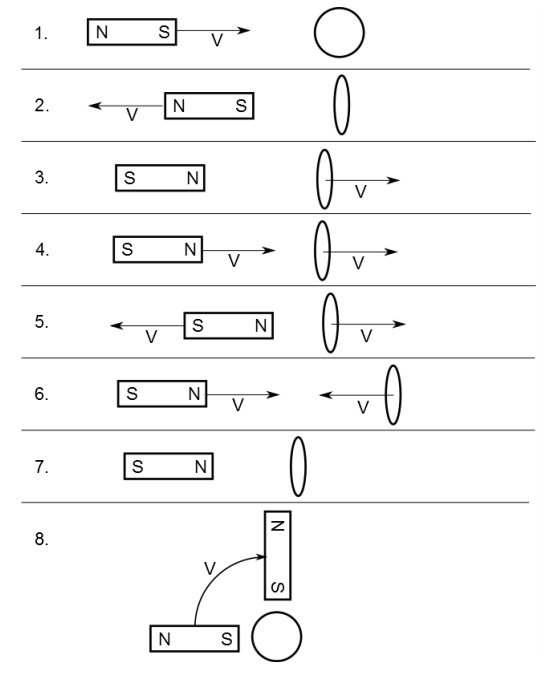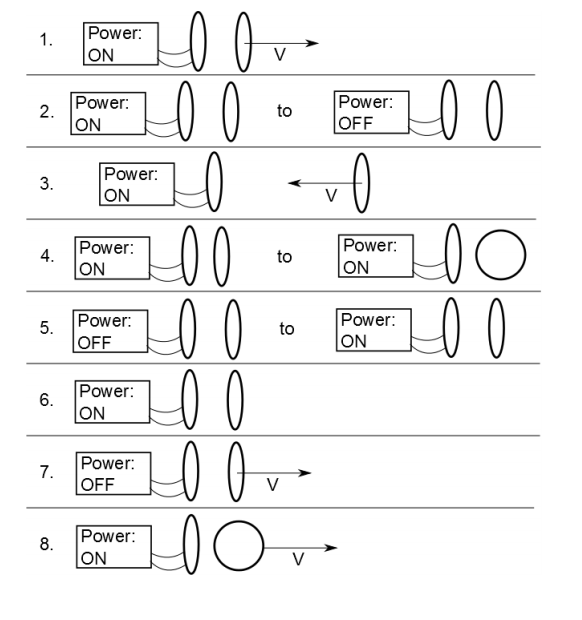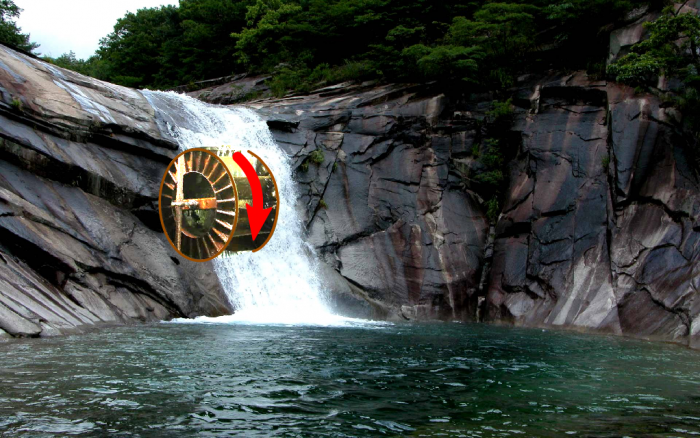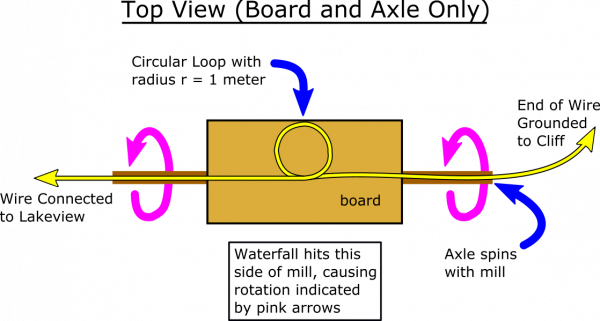Project 14
Project 14A: Manny's Recycling
Manny Hallabero is at it again! While it appears he took a couple weeks off, he is back to peppering the Lakeview City Council with questions about the new magnetic field surrounding Lakeview. You see, Manny is a dedicated recycling enthusiast and has been collecting discarded wire coils from the Hawkion Detector. Manny was planning a large transport of the coils, along with some spare magnets and power supplies, but he is now concerned. He has constructed a variety of scenarios (though some seem a bit outlandish) and asked the Lakeview City Council for answers. Given your expertise, the Lakeview City Council has asked you to analyze each situation to determine: 1) is there an induced current in the given wire coil and 2) if so, what direction is the induced current?
Bar Magnet Situations
Coil Situations
Challenge Questions: Practice with Calculations & Graphs
Learning Goals
- Use Faraday's Law to determine if there is an induced current
- Draw dA vectors and determine change in flux for a coil
- Use the RHR to determine the direction of induced current
- Identify assumptions to simplify the magnetic flux integral
- Identify steps needed to determine an induced current direction
- Explain the difference between conventional current and induced current
Project 14B: Clean Source of Energy or Hidden Stash of Jellybeans???
The people of Lakeview are starting to get used to living life in a constant magnetic field (5 mT pointing into the ground), which seems to be doing a pretty good job keeping EM-boar tigers from entering into the center of town and causing mayhem. Local alternative energy scientist Alysson Watersa has even installed a source of clean energy that is made possible by the magnetic field. This could be incredibly useful if anything happens to the powerplant. She has constructed a water mill with her bare hands and situated it into the side of the cliff, conveniently below a waterfall so that the motion of the water turns the mill at a frequency of $15 \text{ rpm}$. Dr. Watersa also fixed a board along the axle of the mill, and she has laid a loop of 12-Gauge copper wire (with a radius of $1 \text{ m}$) on the board. One end of the loop becomes a wire that comes out the side of the board and is grounded into the cliff. The other end of the loop becomes a wire that runs out the other side of the mill, all the way back to Lakeview. As the mill turns, so does the loop, causing a current to exist in the wire, which can be used as a small convenience for the good people of Lakeview.
Unfortunately, local superstitious person Manny Hallabero is causing a ruckus again, this time about the new energy source. He claims that it's all hocus pocus, and Dr. Watersa is just using the water mill as a ploy to hide her stash of jellybeans in the face of the cliff in order to avoid sharing. Clearly deluded, he won't listen to Dr. Watersa for even a second, so it's up to you to explain to Manny how the water mill works and why it produces the current that it does. It may be helpful for Manny to see a diagram of the mill and a graph of the current produced as his special type of crazy his often open to representational data. Be as detailed as possible, as Manny can be very stubborn about changing his mind. Dr. Watersa's blueprints, shown below, may be helpful.
Learning Goals
- Calculate the induced current from a changing magnetic flux
- Use the right hand rule to determine the direction of the induced current
- Explain why induced current is different from the current in a circuit (in other words, what does it mean for a current to be “induced”?)
- Explain why there is a negative sign in Faraday's Law
Conceptual questions:
- What would a flux versus time graph look like for the spinning loop? What would an induced voltage versus time graph look like? How are they related to one another?
- What would be the maximum amount of current produced by the water mill? Is it enough to power a town?
- What would be the differences between this sort of power generator and power generators in real life?
- What assumptions did you make to solve for the induced current? (Hint: some of them go into simplifying the magnetic flux integral)
- Why is there a negative sign in the induced voltage equation?
- How do the steps of the right hand rule from Wednesday relate to the math/equations for induced voltage?



